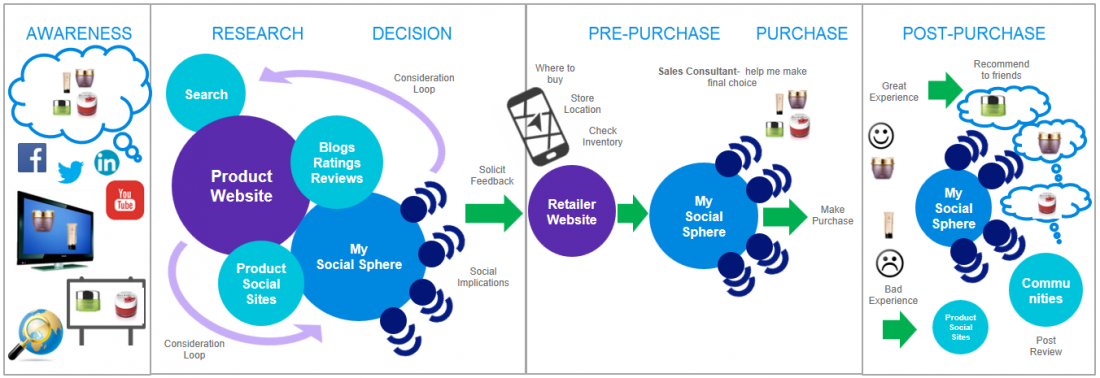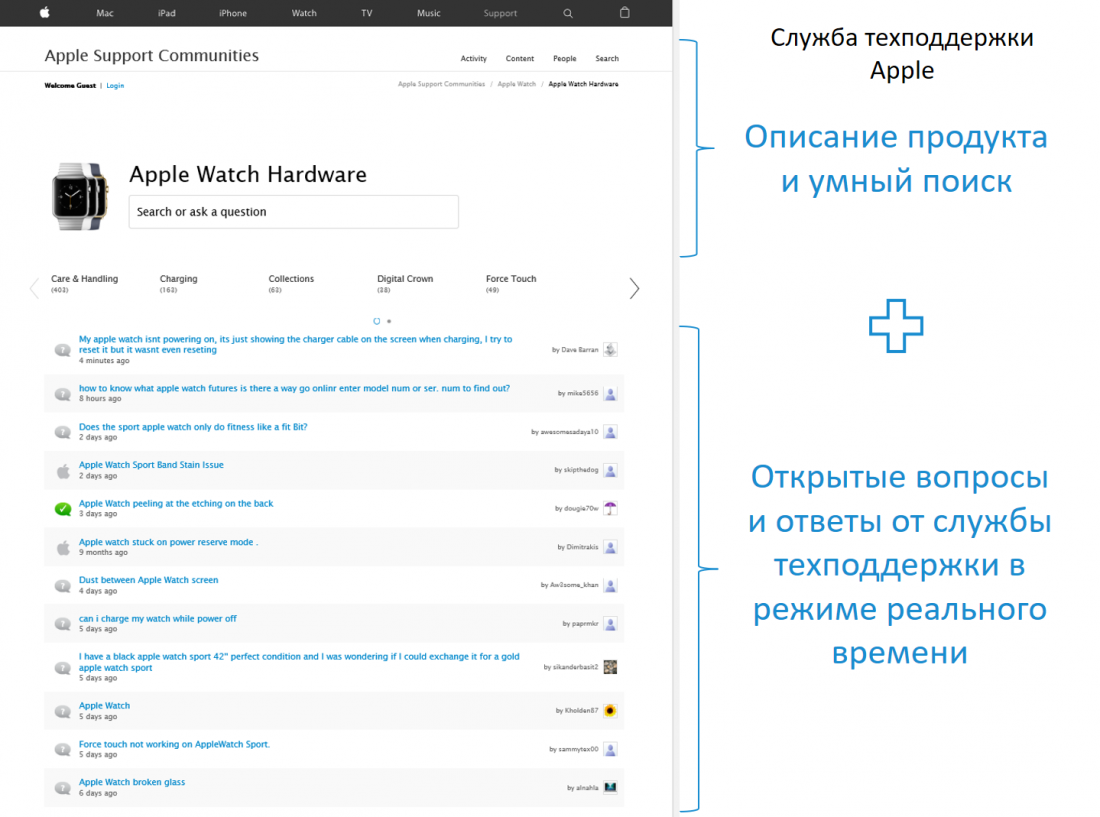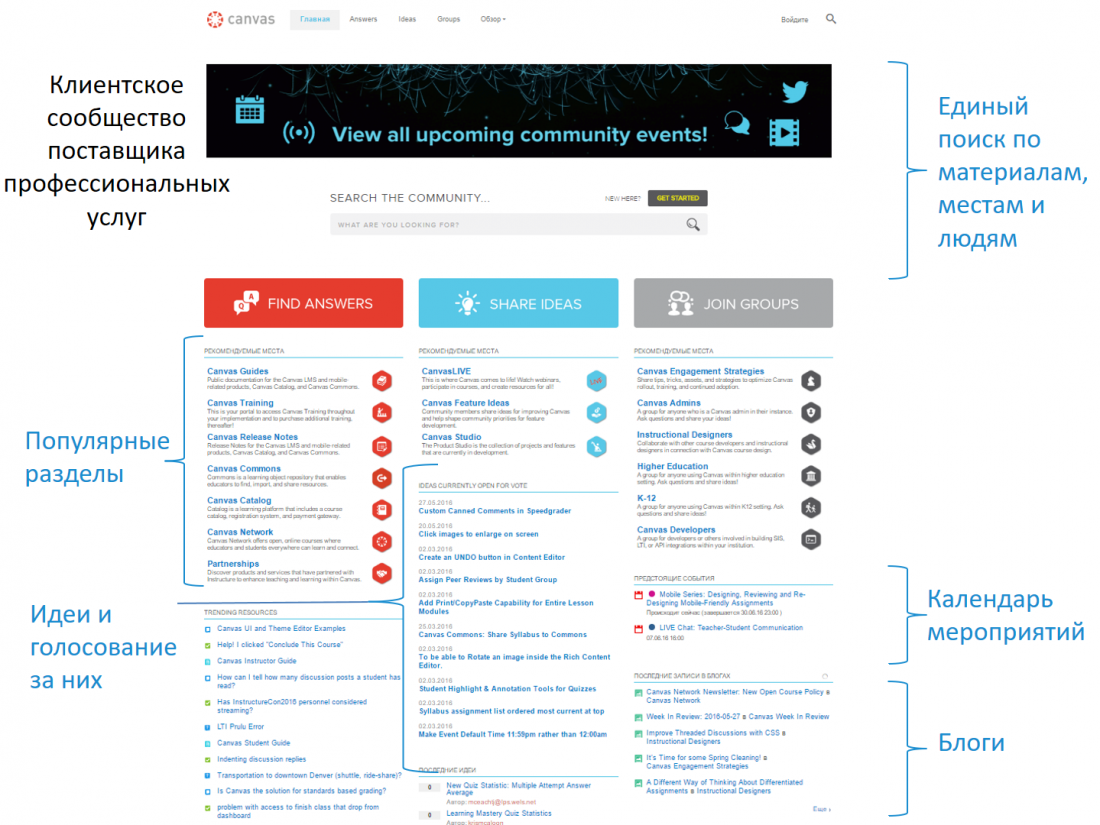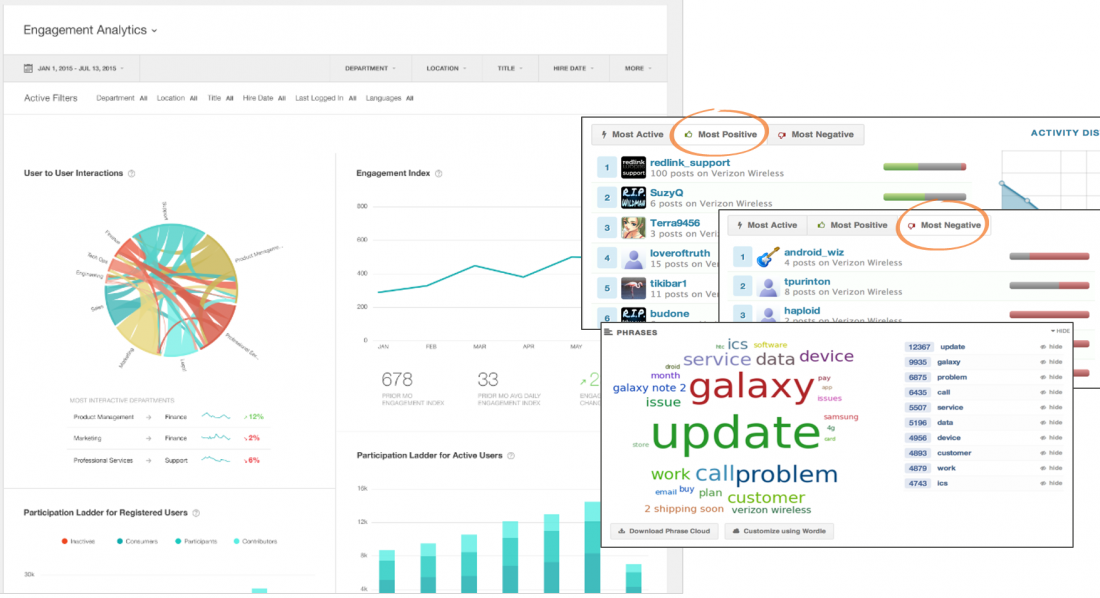Client communities at a glance
Suppose your organization has many customers, so many that you can no longer manage the relationship with them in manual mode. But you still want potential customers to become permanent, and permanent customers to become your ardent admirers. To do this, you interact with clients in one way or another.

Let's briefly look at the points of interaction between your client and you as your relationship develops:
At some point, a person learns about your product - from a friend, from a colleague, on a social network, on Youtube, through an advertisement. There are a million opportunities, and about the same number of sites for primary contact.
If the primary information is of interest, the person begins to find out the details. He goes to your site to read official product information. He goes to the social network and reads comparative reviews to find out how things really are. As information is learned, new questions arise, and everything goes around again - the site, social networks, reviews, blogs, and so on.
If your product meets expectations and a potential buyer is ready to buy your product, he has questions like “where to buy?”, “What equipment?”, “Where is the nearest salon?”. To do this, a person visits an online store, asks your consultant, is interested in trusted people or experts.
And now - about happiness! - goods purchased. The story of interaction with your brand does not end there. If the product exceeds the customer's expectations, he tells about it to friends, acquaintances, in social networks. If reality does not meet expectations, then communicate with your support service. Plus, there are questions about the operation of the product, which also need to be solved somewhere.
In the end, good or bad, but your client has his own personal experience of interacting with your company and your brand.
And here the question is №1 . Do you see this experience of your client as he sees it? Can you put together these points of interaction with your brand? Let's see what interaction tools the average organizations use:
')
A website with the most important information about you and your products. The visitor does not know who the author of the text is, you do not know the name of the visitor, you only see his address and statistics of visits to your pages.
A feedback popup is added to the sites. Clients ask questions and a few of your consultants answer them. The client feels a living person, which is very good, but does not see the experience of other clients.
Groups with social networks. You see your customers by name, customers can directly and openly contact you. But, if the group is really live, your client sees only a very short segment of the story. An example is a very active group of retail banks in the social network , a lot of information and feedback, but to find out the information a week ago, the user must scroll through several screens. What interests other clients, what publications have caused the greatest interest, what other clients most often ask - the user is unlikely to know about this from this group.
Personal account and support service. For example, a personal user account of mobile communications. Here you know what the client’s name is, what he bought from you, what works for him or not, but you don’t know what he is interested in. And again, here it interacts mainly with your support service.
Thus, companies are increasing the number of points of interaction with the client, but a single history of interaction with them has not yet been formed.
And so the question is number 2 . Is it possible to make clients see your brand, your employees, other clients at a single site, while you saw your clients?
Yes it is possible.

This class of solutions is called Client / Partner Communities. The client community is an online platform where the client sees integrated information channels.
(website, social networks, videos, events and others) and interacts with people (these can be company employees, consultants, support services, experts and, most importantly, other clients). This allows you to put together many points of interaction with your potential and actual customers.
The functionality of client communities is described in more detail in the article of my colleague ; I will only provide a few screenshots.
This is a community of commercial bank clients (see fig.). Each newsletter has an author and therefore the client begins to see specific employees of your company, which has a good effect on involvement.

Watch manufacturer support community J. An example of an open work of customer support service.

Customer community professional service provider. The client begins to see what is interesting to others, and also sees the interaction history more concisely and capaciously (the most popular content, the most discussed topic, active users, etc.).

In turn, you will learn about your dear and beloved customers much more than just the number of clicks on a particular page. And it will allow you to provide them with a service that will exceed their expectations .

Personal example. We develop client communities using software from a certain manufacturer. So, if I have any question about their products, I by default go to their client / partner community and look for the right materials. Because if, apart from me, at least someone is interested in this question - I will find it here. Well, except that I go to http://quora.com or http://www.itcentralstation.com to compare different platforms. Well, there is no limit to perfection.
Vladimir Ivanitsa - Facebook | LinkedIn | Supereon
Source: https://habr.com/ru/post/318930/
All Articles